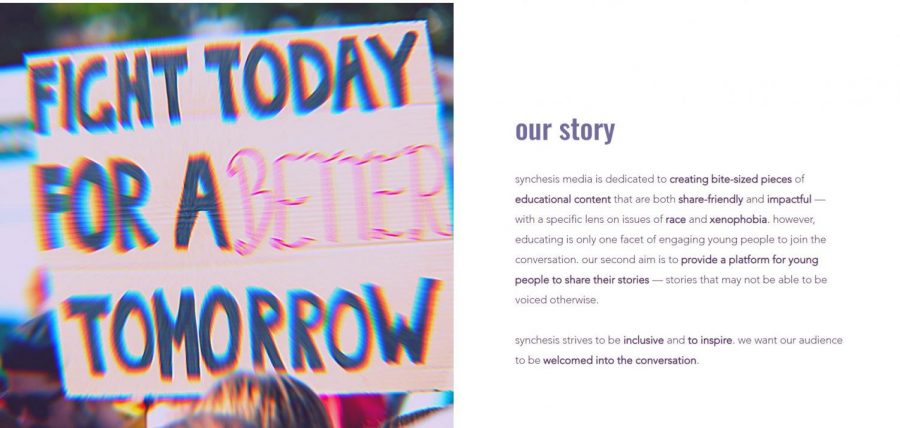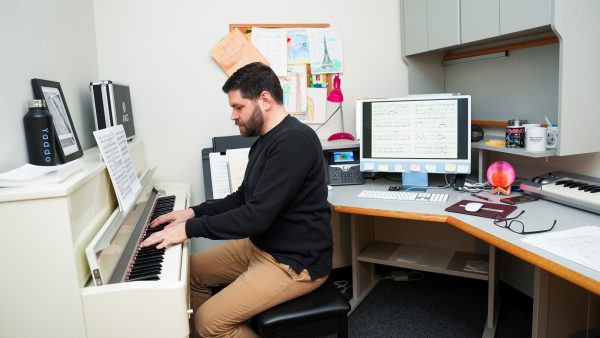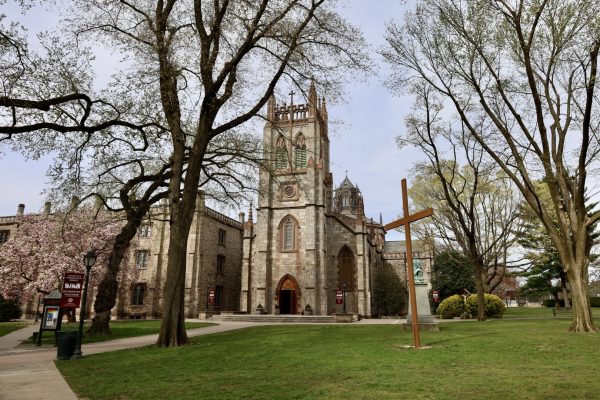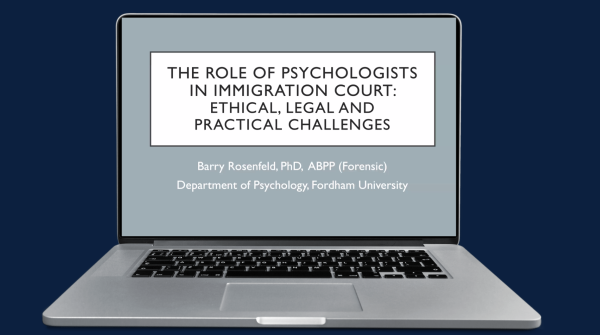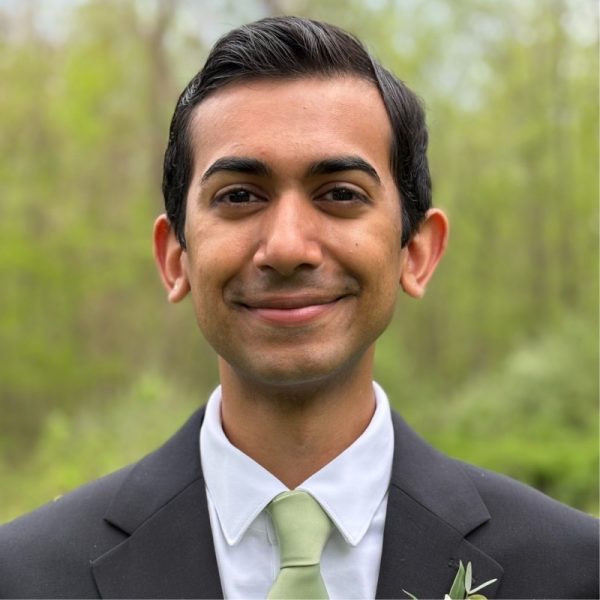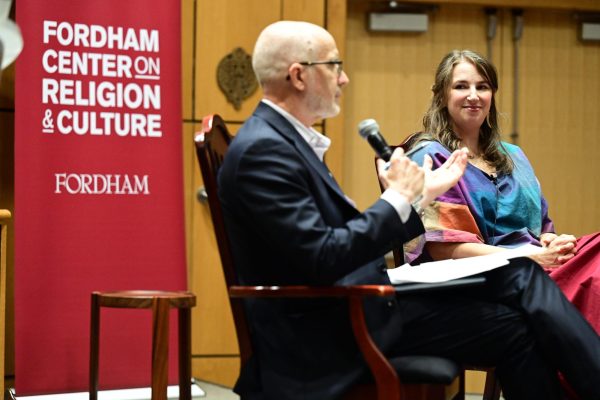Synchesis Explains Use of Social Media to Share Stories and Histories
In early March, right before the evacuation of universities across the country, three college students from San Francisco, California — Randy Dumalig, FCRH ’22, Izzy Cerri, San Francisco State University ’21 and Leon Tsai, Columbia University ’21 — rallied together to co-found an Instagram page. Their page, @Synchesis, became an ongoing project to address issues being faced by Americans today and communities around the world.
Growing racism against Asian Americans, a result of the COVID-19 pandemic, inspired the three students to create a safe space for users to share and discuss creative thoughts and histories centered around racism, xenophobia and identity.
“We thought about what that word [Synchesis] means,” said Tsai. “It means ‘to intermingle.’ And essentially what we are trying to do is weave a bunch of different narrative perspectives, different vantage points together, to try and show young people that all of this connects.”
Having worked together for the San Francisco local government, the team said they realized the amount of time and effort it takes to pass legislation and have it implemented smoothly into society. They said they were looking for a faster way to reach their community and craved the personal connection and human interest pieces that could tie together the issues they noticed — something that they said the news seemed to lack.
“You know a lot of what you see about race, about all these issues, is being said on the news by people in suits, people with phDs and doctorates, and that’s great, it’s just, I don’t watch the news,” said Dumalig with a laugh. “People our age don’t really watch the news nowadays. Social media really is that constant thing that everyone is on, and we wanted to try and use that platform for better purposes.”
Since the start of their Instagram account, which is their main form of communication with their followers, the team has been working to bring awareness to topics of interest and issues plaguing communities nationwide. They said their “Community Spotlight” posts are a way to highlight the stories of individuals doing impactful work within their own bubbles.
“The best way to impact people sometimes is … to cultivate that one to one connection with those personal narratives … We realized that it is important to stop and take a moment and have somebody use their experiences to talk about … how these distinct experiences … ultimately impact one’s creative voice — how one sees the world,” said Tsai.
The content they choose to showcase is uploaded on a weekly basis with corresponding interviews and media emphasizing the overarching theme of the week. Their Instagram feed is made up of videos, pictures and infographics that are used to tell stories and relay current events or histories pertinent to people today.
“We’re sort of explaining these things in bits and pieces,” said Dumalig. “Every single day takes a look at x, y, z issues from different perspectives. But I think fundamentally, they are all grounded in these big intersectional examinations of the society around us today. It’s so hard to separate challenges into distinct boxes and categories, and that’s why we believe in using the personal narratives. Because it’s only by working with individual narratives and stories that you start to see how all of these different components interact.”
These “Community Spotlights,” used as personal narratives, are from students, professors, leaders, activists, writers, singers and other creators.
When asked if the team could pick a favorite narrative, the three were left speechless and collectively explained that since no two stories are alike, there was no way they could pick a favorite.
On their website, the team has been sharing blog posts by writers offering their work and willing to share their narratives. By allowing submissions, Synchesis welcomes a wide range of stories to help grow their audience, according to the Synchesis team.
“What we want to do is notice and recognize that we as people of color are not necessarily the predominant group there, and instead of kind of falling into that and letting ourselves get trapped, we really want to embrace that and show that we can talk on both sides — talk with the communities we grew up in and the groups we interact with now,” Dumalig said.
Cerri said for her, Synchesis is a way for people to join the conversation. She wants them to realize that the issues being discussed on the team’s social media account are occurring on a daily basis and do not just end with the stories highlighted by the news.
“I was very much so naïve,” she said. “I was never really in this type of conversation at all. I never really thought about race and xenophobia and how it affects … not only me, but other people around me.”
In the coming months, Synchesis will be collaborating with student and fashion designer Russ Alexeev, GSB ’22. They will be teaming up with Alexeev’s clothing brand Diskko to raise money for the New Jersey-based nonprofit Friends Connect Foundation, whose mission “is to provide opportunities for individuals with special needs to develop bonds with local peers,” according to their instagram account.
“We realized that a lot of people who were reaching out to us were college age, just like us, who really wanted to get involved but didn’t necessarily know how,” said Dumalig.
By collaborating with Diskko and the Friends Connect Foundation, Synchesis said they hope to give their audience a way to support their local communities. In this case, the team will sell T-shirts, designed by Diskko, based on the nonprofit’s mission. All proceeds will be donated to the foundation.
The team said they believe this initial step will allow them to organize similar events in the future. They have just started advertising the event on Instagram.
As for the goal behind creating Synchesis, Dumalig said that at first they were talking about inviting more young people into conversations on race, identity and xenophobia.
“All of which is still true, but I think as the team has grown, the mission and the scope of what we want to do has grown also,” said Dumalig. “So I guess our … I don’t want to say ‘new mission,’ but sort of an addendum to the old mission is really just increasing active participation in social movements that you care about.”
Over the past few months, the team has grown and is currently working with 15-20 students from across the country — from universities such as Wellesley College and Carleton College — to create content and expand their reach.
“If we can inspire somebody to just virtually just take 60 seconds of their day, stop and realize that everybody has a cool story to tell — I think that we would all think we had done our job,” said Tsai.





































































































































































































